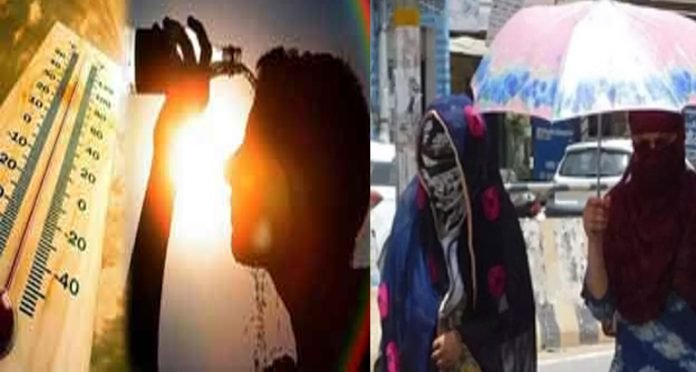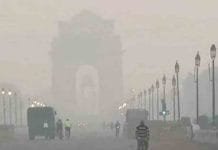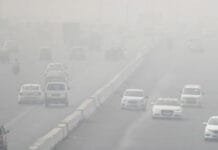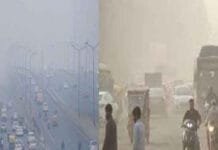North-west and eastern India are reeling under severe heat wave conditions, with temperatures soaring to record highs. The plains of the hilly states are experiencing some of the most intense heat. In Kathua, Jammu and Kashmir, the temperature has reached an alarming 48.1 degrees Celsius, marking the highest temperature recorded so far. Jammu is also suffering, with maximum temperatures hitting 43 degrees Celsius.
Widespread Heat Wave Across Northern India
Extreme Temperatures in Bihar and UP
Numerous regions in Bihar are currently engulfed by a severe heat wave, prompting the India Meteorological Department (IMD) to issue a red alert. The IMD reports that heat wave conditions persist across several areas of the Gangetic plains, affecting West Bengal, Bihar, Jharkhand, Uttar Pradesh (UP), Delhi, Punjab, Haryana, and Odisha over the past 24 hours.
In Bihar, a red alert has been declared for the South West, South Central, and North West regions. During this period, maximum temperatures ranging from 42 to 45 degrees Celsius have been recorded across many parts of North India, including Rajasthan and Punjab. In UP, Prayagraj has reported a scorching 46.3 degrees Celsius, while Delhi has seen temperatures soar to 43.8 degrees Celsius.
IMD Forecast and Alerts
The IMD forecasts that heat wave to severe heat wave conditions will continue in parts of Gangetic West Bengal, Bihar, and Jharkhand. Other regions likely to experience heat wave conditions include Uttarakhand, Uttar Pradesh, Jammu, Himachal Pradesh, Punjab, Haryana-Chandigarh-Delhi, and East Madhya Pradesh. These heat wave conditions are expected to persist for the next seven to eight days, although there is also a possibility of rain in some areas.
Health and Safety Measures During the Heat Wave
Health Risks and Precautionary Measures
The severe heat wave poses significant health risks such as heatstroke, dehydration, and exacerbation of chronic illnesses. It is imperative for residents to take necessary precautions:
- Stay indoors during peak heat hours.
- Hydrate frequently with water and electrolyte-rich fluids.
- Wear light, breathable clothing.
- Avoid strenuous outdoor activities during the hottest parts of the day.
Impact on Agriculture and Economy
The intense heat is also affecting agriculture, leading to increased evapotranspiration rates and water stress on crops. This could result in lower crop yields and economic losses for farmers. The government and agricultural bodies are offering support through irrigation schemes and crop insurance to help mitigate these adverse effects.
Weather Forecasts and Future Expectations
Skymet Weather Insights
According to Skymet Weather, a private weather forecasting service, the severe heat wave will continue to dominate UP, Bihar, and Jharkhand. Relief is not expected in North Bihar any time soon, with the heat wave likely to persist. Additionally, parts of Madhya Pradesh, West Bengal, Odisha, Punjab, and Haryana may also experience heat wave conditions.
Rainfall Predictions
Contrasting the heat wave in the north, regions such as Sikkim, Northeast India, South-West Madhya Pradesh, and Vidarbha may experience light to moderate rainfall. There is also a possibility of light rain in South Odisha, Andhra Pradesh, Tamil Nadu, South Gujarat, and South-East Rajasthan.
Monsoon Arrives in Gujarat and Maharashtra
Early Monsoon Onset
While North India battles extreme heat, parts of Gujarat, Maharashtra, and South India are receiving heavy rains. The Southwest Monsoon has arrived in South Gujarat earlier than usual, typically reaching by June 15. This early onset has resulted in significant rainfall in South Gujarat, with the Meteorological Department predicting continued heavy rain accompanied by thunderstorms over the next two days.
Heavy Rainfall in Maharashtra
Maharashtra, including Mumbai, has also received substantial rainfall. On Tuesday, Thane recorded 48.77 mm of rain, contributing to a total of 141.9 mm since June 1. The monsoon’s arrival is providing much-needed relief and replenishing water sources in these regions.
Concluding Remarks: A Nation of Weather Extremes
India is currently experiencing a stark contrast in weather conditions, with the north suffering from severe heat while the southwest enjoys the cooling effects of the monsoon rains. It is crucial for residents in the heat-affected areas to take all necessary precautions to safeguard their health and wellbeing. Meanwhile, the advancing monsoon offers hope for relief and balance in other parts of the country.
As we continue to monitor these developments, it is clear that the nation must prepare for a season of challenging weather. Collaboration between government agencies, meteorological departments, and the public is essential to mitigate the impacts of these extreme weather patterns.















